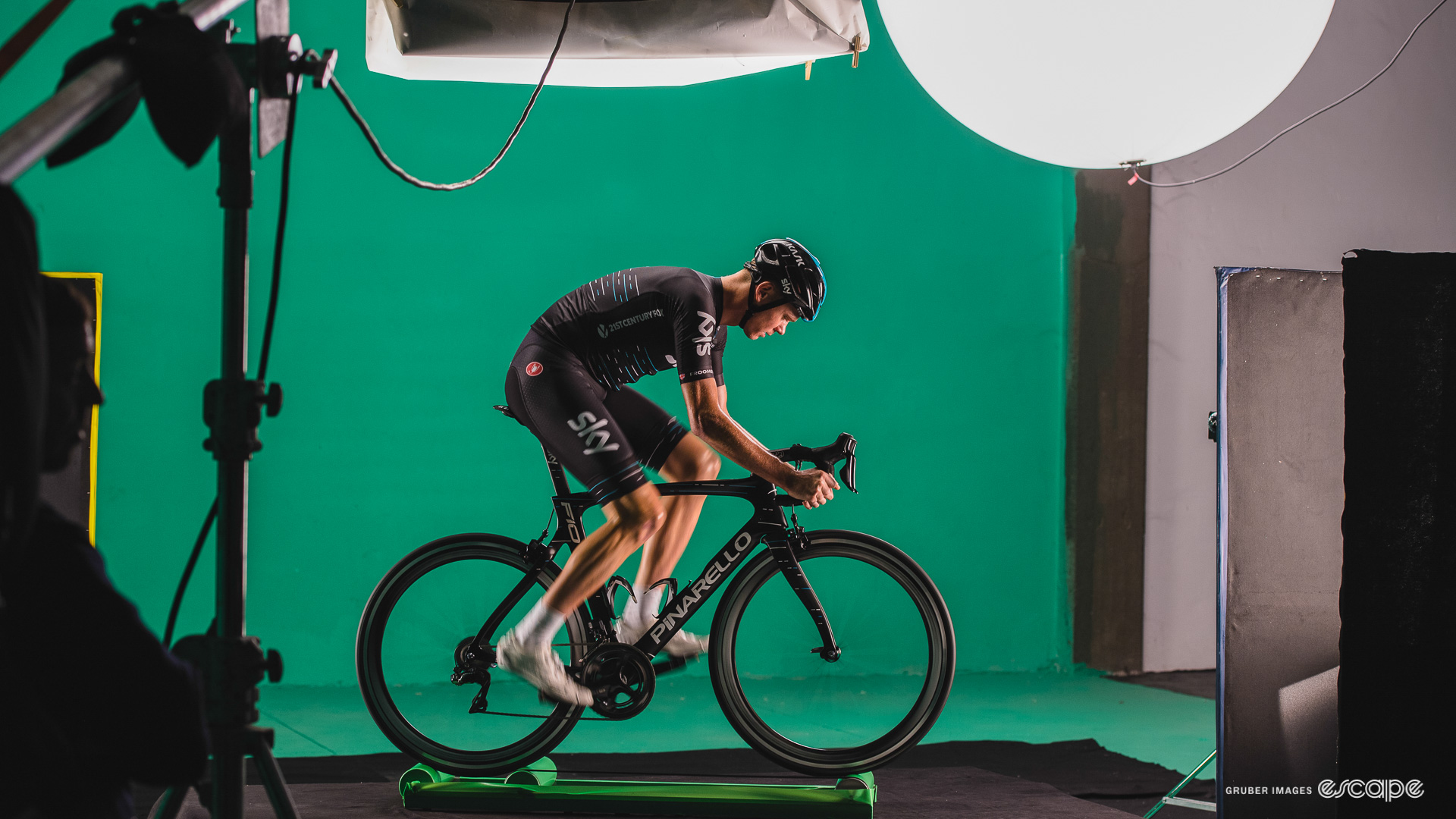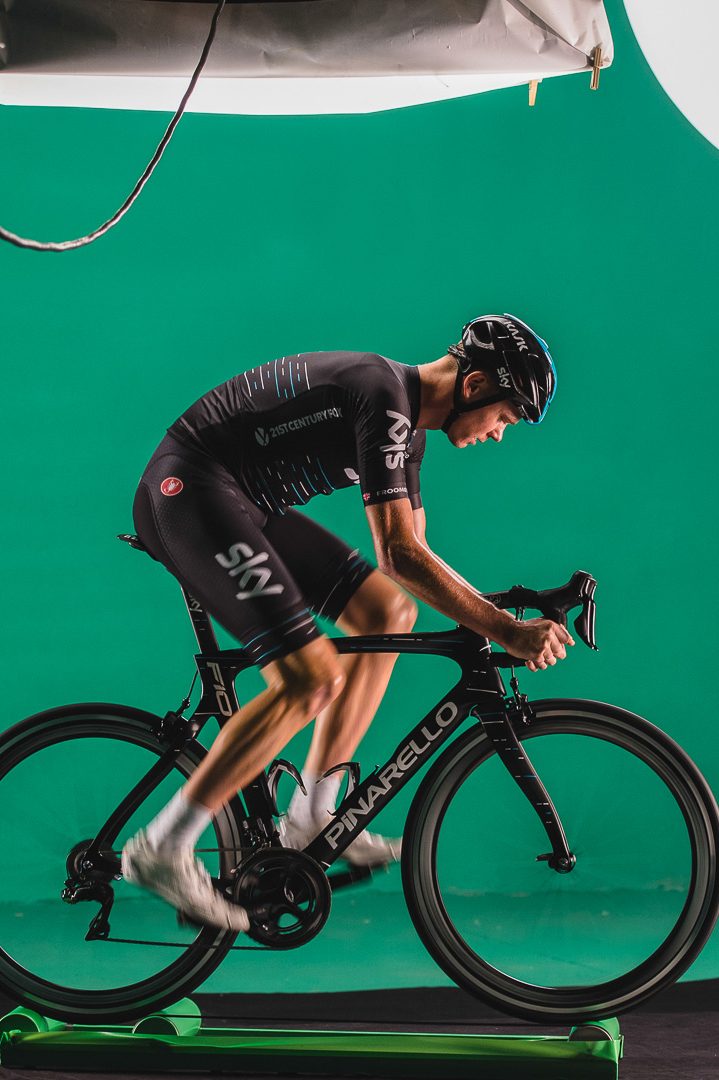It’s almost a week since Chris Froome claimed he had uncovered a bike fit difference of three centimetres in the reach to his handlebars from the position on his Team Sky/Ineos Pinarello to his current fit on Israel-Premier Tech’s Factors. The question on most people’s lips ever since has been: how the heck does a rider of his experience not notice a difference of three centimetres?
We’ve studied the evidence, and while functionally for Froome’s bike fit that three-centimetre difference is simply impossible, there is an explanation that threads the needle of Froome’s tape measure showing a significant change, but which he was unable to feel on the bike. The short version? His position only looked longer.
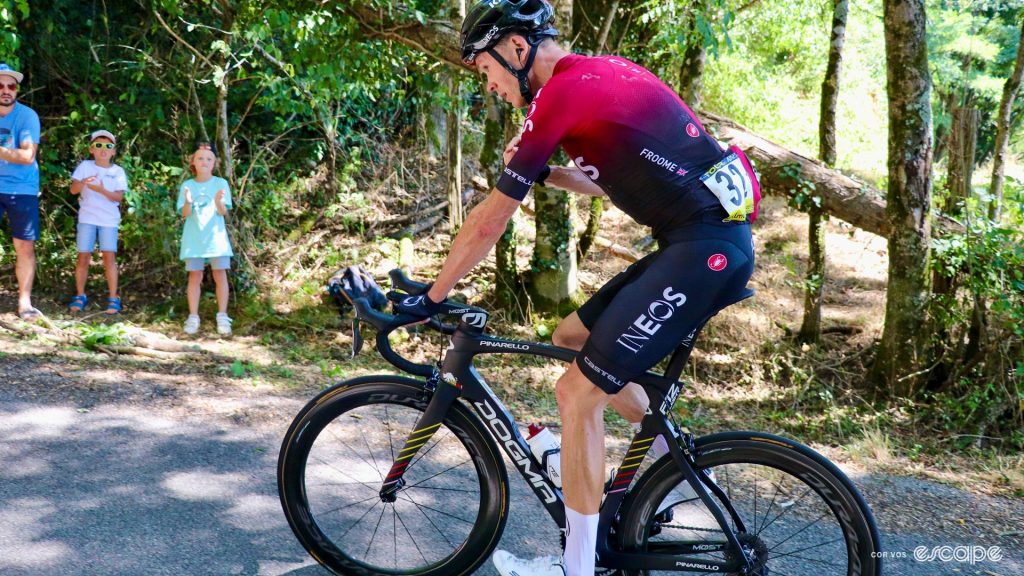

It’d be easy to laugh off Froome’s claim as another excuse from a rider struggling to get back to his best. But consider for a second the horrific crash Froome suffered in 2019: it is entirely plausible his recovery forced a change, or series of changes, in his position and given it seems logical the crash would carry some lasting side effects, perhaps such a change was both required and not perceivable.
I think that assumption is fair, and in my book Froome, of all riders, deserves the benefit of the doubt, especially considering again the impact of that nasty crash. That said, the difference he has claimed simply cannot exist, which raises the question what else might be responsible for it. Here is why:
Exhibit 56
Bar a short period on a 54 cm (paired with a longer stem) during his stint at Israel-Premier Tech, Froome has ridden a 56 cm frame for the majority of his career. During his Team Sky and Ineos days he raced a 56 cm Pinarello F8, F10, and F12. The F8 is a bit of an outlier (by 4-5 mm in both stack and reach figures), but the geometry of the F10 and F12 is almost identical to that of the Factor Ostro VAM Froome has raced throughout his IPT days.
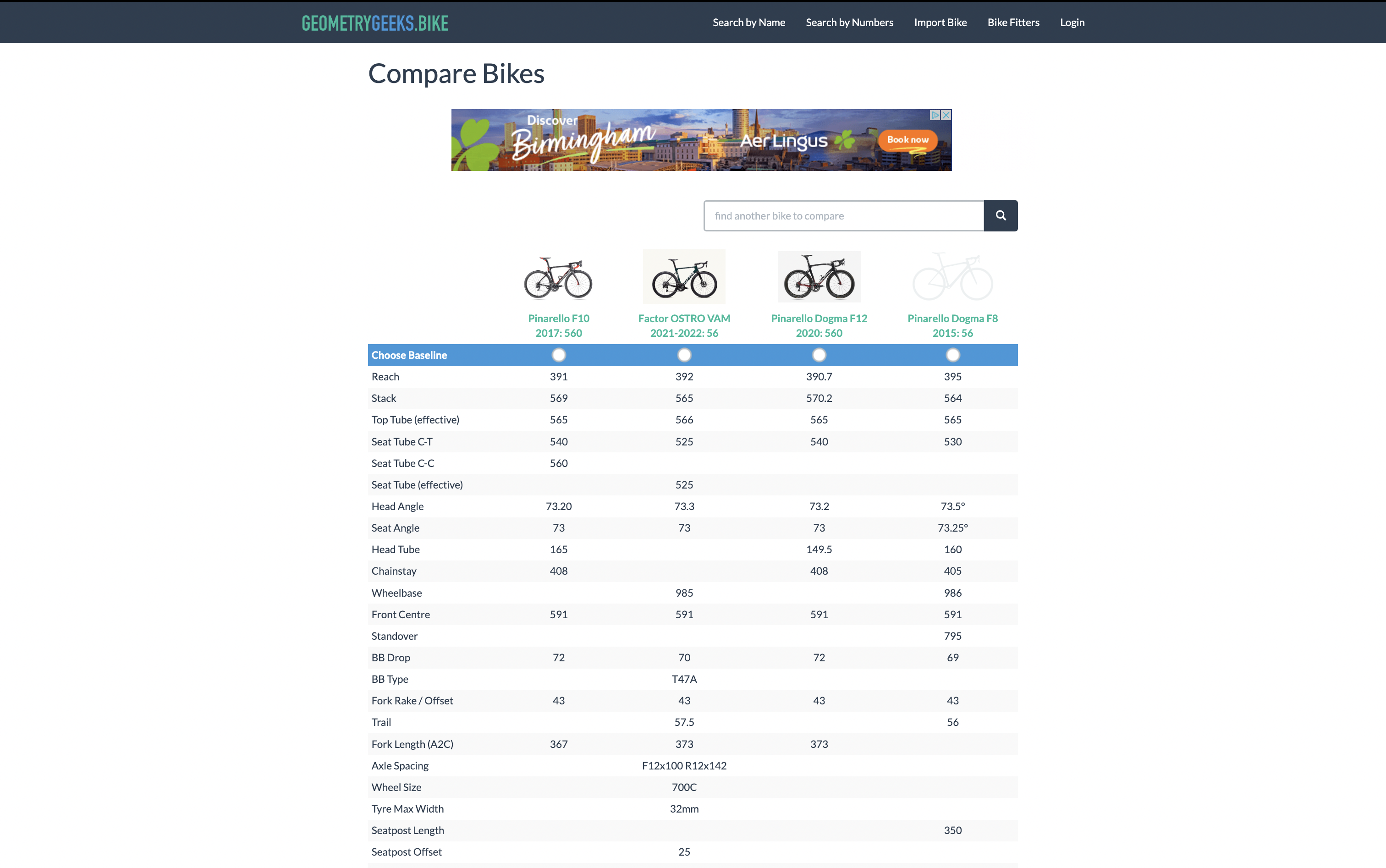
As this screenshot of a comparison of these bikes on GeometryGeeks shows, there is just 1 mm of difference in reach and effective top tube measurements on the bikes from both manufacturers, with the Factor measuring 1 mm longer at 392 mm.
The seat tube angle is identical, as is the front centre, while the head tube angle varies by a total of .2 degrees. Basically, bar the 4 mm difference in stack which will affect reach but not by much, the position geometry is almost identical across all the bikes.
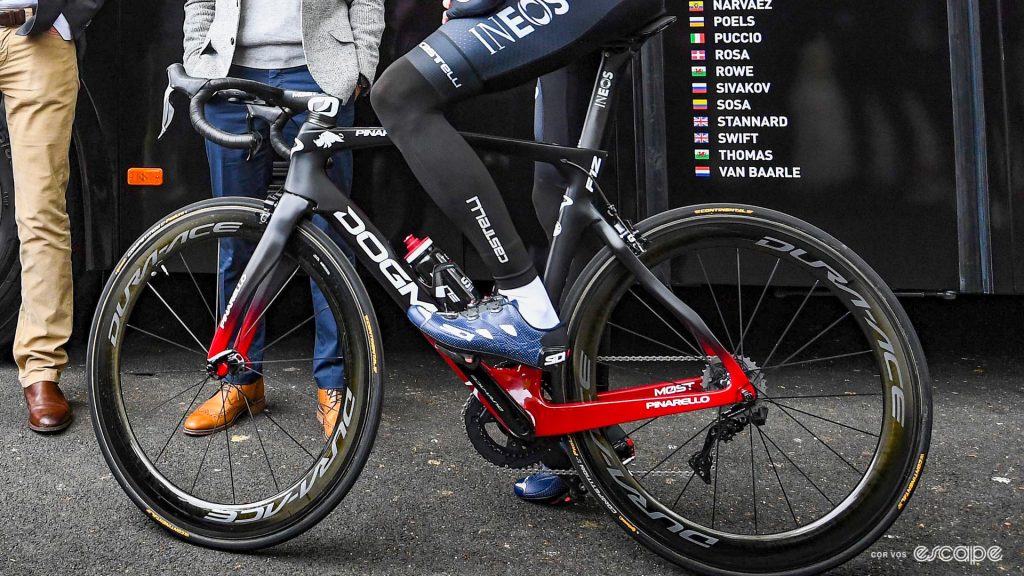
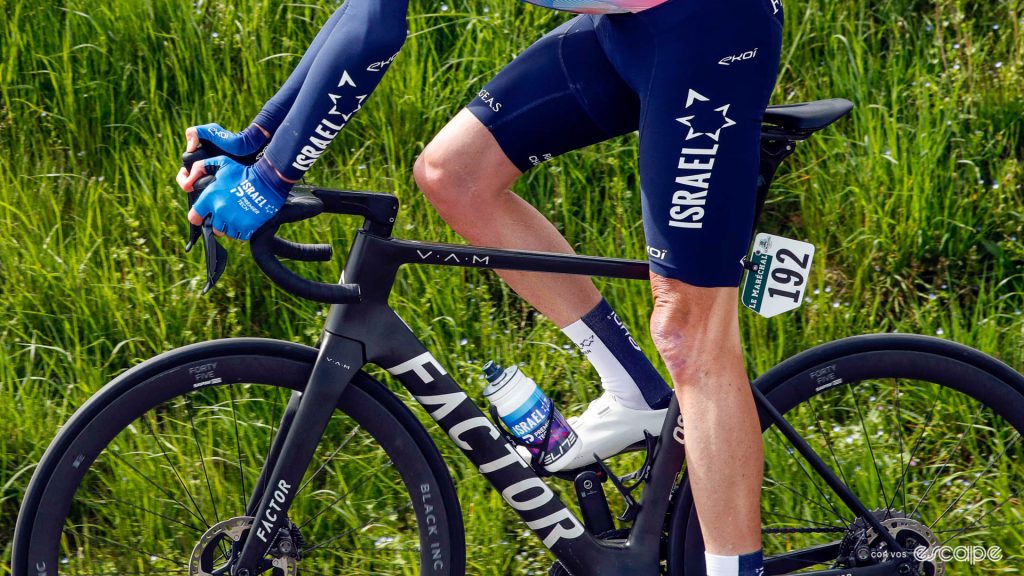
Stem length, check.
Saddle forward position, check.
Given there is zero possibility of a 30 mm (3 cm) discrepancy in the frames, can it be found in the build kit?
Answer: Probably not.
Scouring through bike check articles online it seems Froome raced with a 120 mm stem on both his Pinarello and Factor 56 cm frames. Furthermore, the MOST and Black Inc cockpits both offer 80 mm of handlebar reach (the horizontal distance between the centre of the tops (or where the bar is clamped by the stem) and the centre of the furthest point of the hooks, as defined by MyVeloFit).
What about saddle setback? Could that account for the reach difference? It’s possible, but not by anywhere near as much as 30 mm.
A good bike fitter, say the likes employed by a WorldTour team, and a good mechanic, say for example Gary Blem, Chris Froome’s longtime personal mechanic, will always start a bike fit or build by getting the saddle in the right position relative to the bottom bracket for the rider. Professionals with this level of experience will simply never adjust the saddle position to correct a reach discrepancy or issue. You can bet your bottom dollar the team’s staff will have had Froome’s saddle in the correct position, as evidenced by the photos of Froome’s setups.

While we can’t measure his exact fore/aft positions from photos, we can see they are likely very similar given Froome used an inline seat post on his Pinarellos and a currently uses a seat post with minimal setback (approximately 5 mm) on his Factors. Given the saddles are in relatively similar forward positions on the F12 and Ostro VAM, and again both the Pinarello and the Factor have identical seat tube angles, we can confidently exonerate saddle fore/aft setback as the guilty culprit in this bike fitting conundrum.
Even Froome’s time on the 54 cm Factor can’t explain the difference as the 8 mm-shorter reach and 16 mm-shorter top tube measurements are offset by his move to a longer, 130 mm stem.
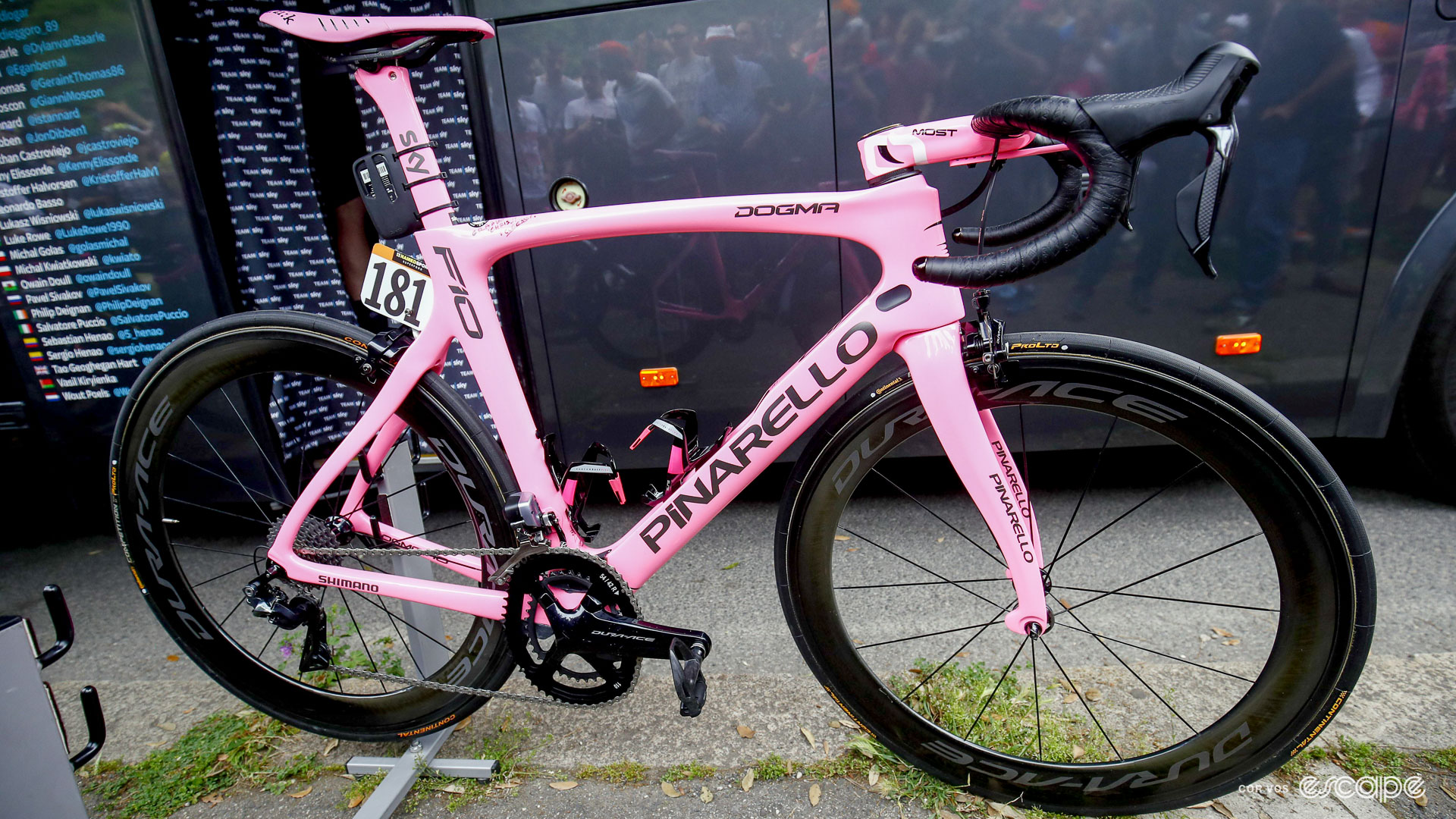
The long and short of saddles
All that is not to say Chris Froome didn’t find a three-centimetre difference in reach. In fact, I believe Froome when he says that’s what he found. Crucially, though, it won’t have been a functional difference. Here’s why:
Froome rode on a Fizik Antares during his Team Sky days. The somewhat traditional or “long nosed” saddle measures 274 mm long x 140 mm wide.
Fast forward to today, Froome is racing on a Gebiomized Sleak “short-nosed” saddle measuring 250 mm x 135/145 mm.
Saddle size matters here. Subtract the Gebiomized 250 mm short-nosed length from the Fizik’s 274 mm traditional/long nose saddle and you get … 24 mm. Let’s allow ourselves a little rounding, Froome’s new saddle is almost 25 mm shorter than his old saddle.
Manufacturers of short-nosed saddles suggest the correct process to account for this difference in saddle length is to have the front tip of the short-nosed saddle three centimetres further behind the bottom bracket than the front tip of the long-nosed saddle. For example, if the tip of Froome’s Fizik saddle is 80 mm behind a vertical line dissecting the centre of the bottom bracket, his short-nosed saddle should be 110 mm behind this imaginary line, or perhaps 105 mm in Froome’s case.
Despite this change, Froome (or any rider) is still sitting in the same position in space above the bike and the sit bones are supported in the same location. The shorter saddle simply means the measured saddle tip-to-handlebar reach has increased, not the functional reach for the rider.
Some fitters will use the 80 mm point (the point at which the saddle reaches 80 mm in width) as the fit reference point for measuring both saddle height and setback. Taking this approach will have the same results, the tip of the short-nosed saddle will still measure further to the handlebar, but, measured from that 80 mm point, the reach to the handlebar should be quite similar.
Again, there’s almost zero chance a WorldTour team’s bike fitter and a mechanic of Gary Blem’s experience were unaware of this length difference and how to solve for it.
A difference you can see, but not feel
All this considered, it is conceivable Froome’s reach from the tip of his saddle to any point on the handlebars had increased by 29 mm with the move to a short-nosed saddle. Getting very nerdy, you can add in the 1 mm of additional reach in the Factor Ostro frame and the 5 mm of additional seat post setback (which will functionally affect Froome’s position if it alters his setback), and voila, you get roughly three centimetres of difference in perceived reach.
It’s difficult to believe any WorldTour bike fitter or mechanic would be unaware of this short- vs. long-nose setup requirement, but all the evidence suggests no other explanation. Was Froome himself unaware? He is quoted in the CyclingNews article that broke this story as saying, “I found that my reach, so from saddle to the handlebars, was over three centimetres of difference between the two bikes, longer on the current bike.”
Froome also mentioned attending a specialist after this finding, where more discrepancies were found. That could well be true. It could also be the case that, just like any rider, Froome’s ideal position may change from year to year. The specialist fitter may have adapted his position on the Factor he rides now, but that doesn’t necessarily mean it was wrong before.
To be fair, as someone who has used both saddles, I can see how the mistake might happen. The Antares has always struck me as being longer than it looks, and the opposite is true of the Gebiomized Sleak – it doesn’t look like a typical short nose saddle and kind of looks longer.
Froome may well be correct, he is probably also incorrect if he thinks that 30 mm made a difference to his bike fit or performance.
Escape Collective put this theory to Israel-Premier Tech and Blem, but have not yet received a reply.
Did we do a good job with this story?
